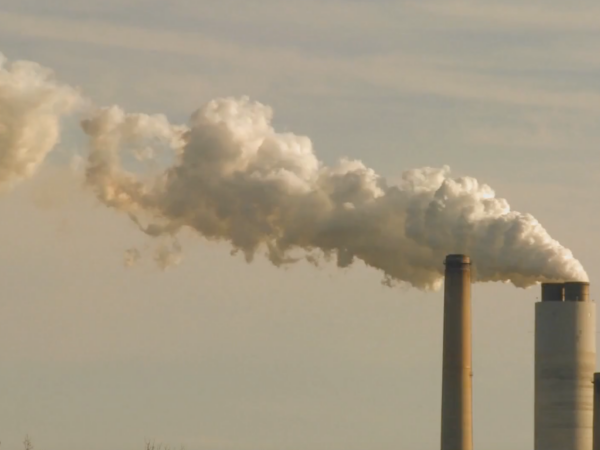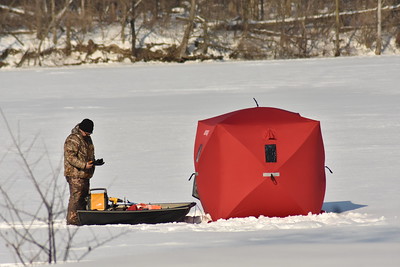
From lead pipes to PFAS, drinking water contamination is a major issue plaguing cities and towns all around the Great Lakes. Cleaning up contaminants and providing safe water to everyone is an ongoing public health struggle.
Keep up with drinking water-related developments in the Great Lakes area.
In this edition: Minnesota DNR decides water quality study is not needed for irrigation well, Saranac Lake drinking water has elevated sodium levels, New York will receive $22 million from EPA for water infrastructure projects, Northeast Ohio Areawide Coordinating Agency holds public meeting to answer questions about 20-year clean water plan, Penn State webinar provides water management assistance for those on private water supplies, Pennsylvania grand jury finds state environmental and health departments did not properly oversee fracking industry, Ontario government seeks public comment on groundwater withdrawal proposal, Thunder Bay City Council approves loan program for private replacement of lead service lines, national plumbing standard revised to require greater protections from lead leaching, EPA decides not to set drinking water standards for chemical found in rocket fuel, and Environmental Working Group study finds nitrate contamination in thousands of communities is getting worse.
Click on the headline to read the full story:
Minnesota:
- DNR: No impact study needed for potato irrigation project in Minnesota’s Pineland Sands area – Star Tribune
The Minnesota Department of Natural Resources will not order a Pineland Sands farm to complete a water quality study to dig an irrigation well. The decision, a win for potato farmers in the region, came after months of reviews, extensions, and delays and leaves questions about how the DNR will address the increasing nitrate contamination in drinking water as more timberland is converted to farmland in the area.
New York:
- Report finds higher than normal salt levels in Saranac Lake drinking water – North Country Public Radio
The sodium level in Saranac Lake drinking water is not safe for people on severely restricted sodium diets, according to Saranac Lakes’ Annual Drinking Water Quality Report for 2019. Road salt and water softeners are listed as likely sources of the contamination.
New York is receiving $220 million in EPA funding for safe drinking water. The bulk of the funds will support low-interest loans for water quality infrastructure improvements in areas like wastewater, water recycling, and stormwater.
Ohio:
The Northeast Ohio Areawide Coordinating Agency, the environmental and transportation planning agency for the region, held a virtual public meeting on July 1 to answer questions about a proposed clean water plan that updates the agency’s current wastewater management and water quality plan for the next 20 years.
Ontario:
- Ontario Proposes to Further Protect Water Resources: Government Consults on Enhancements to its Water Quantity Management Program – Government of Ontario
The Ontario government is seeking public input on a water quality management proposal that would give municipalities a greater say in letting companies withdraw groundwater in their communities for bottled water. The proposal is open for public comment on the Environmental Registry until Aug. 2.
- City Launches Lead Water Service Replacement – Lake Superior News
Thunder Bay City Council approved an interest-free loan program to allow property owners to borrow funds from the city to replace privately owned lead service pipes. Loans for up to $3,000 of eligible costs are available for five years, or 10 years for certain property owners.
Pennsylvania:
Pennsylvania is one of the few states that doesn’t regulate private drinking water supplies, and approximately three million Pennsylvanians use a private well, spring or cistern for their drinking water. A Penn State Extension webinar series, which began June 24 and continues through Aug. 12, aims to address drinking water issues in private water supplies by helping r ural homeowners resolve common water management problems. Webinars are held Wednesdays from 1-2 p.m. and are free, although pre-registration is required.
- Pennsylvania grand jury blasts DEP, DOH over fracking – Kallanish Energy
A state grand jury found after a two-year investigation that the Pennsylvania Department of Environmental Protection and the Pennsylvania Department of Health both failed to oversee the fracking industry and protect Pennsylvanians from the risks of fracking operations, including well water contamination and air pollution. The grand jury’s report was released in the wake of Pennsylvania’s Attorney General Josh Shapiro filing charges against Range Resources and Cabot Oil & Gas.
National:
- Revised national standard tightens lead leaching limits for new drinking water fixtures – Environmental Defense Fund
The national standard for plumbing devices, known as NSF/ANSI/CAN 61, was revised to require, by Jan. 1, 2024, that manufacturers of faucets and fountains that dispense drinking water meet limits five times more protective for lead leaching than the current standard. All states require that plumbing devices comply with this standard.
- EPA Decides Not to Regulate Perchlorate in Drinking Water – Bloomberg Law
The U.S. Environmental Protection Agency announced June 18 that it won’t set national drinking water standards for perchlorate, a chemical that can be found in rocket fuel, fireworks and fertilizers. The agency acknowledged perchlorate can affect human health by interfering with the thyroid gland, but said it doesn’t appear in enough public water systems, or at high enough levels, to cause concern. Water utilities generally agree that the regulations weren’t necessary, but environmental advocates have raised concerns and the National Resources Defense Council plans to bring the issue to court.
- EWG Investigation: Across Farm Country, Nitrate Pollution of Drinking Water for More Than 20 Million Americans Is Getting Worse – Environmental Working Group
An Environmental Working Group analysis of data from 10 states found that of over 4,000 utilities with the most serious nitrate contamination, nitrate levels are increasing in 52 percent of these communities. Nitrate is a primary chemical component of fertilizer and manure, and elevated levels in drinking water can increase the risk of colorectal cancer, thyroid disease and neural tube birth defects. The states examined in this study include three Great Lakes states: Illinois, Pennsylvania and Wisconsin.
Read more drinking water headlines on Great Lakes Now:
Climate change threatens drinking water quality across the Great Lakes
Can new crop of Great Lakes politicians turn the tide on drinking water quality?
Featured image: In this Nov. 8, 2018, file photo, a lead pipe, left, is seen in a hole the kitchen ceiling in the home of Desmond Odom, in Newark, N.J. (AP Photo/Julio Cortez)




